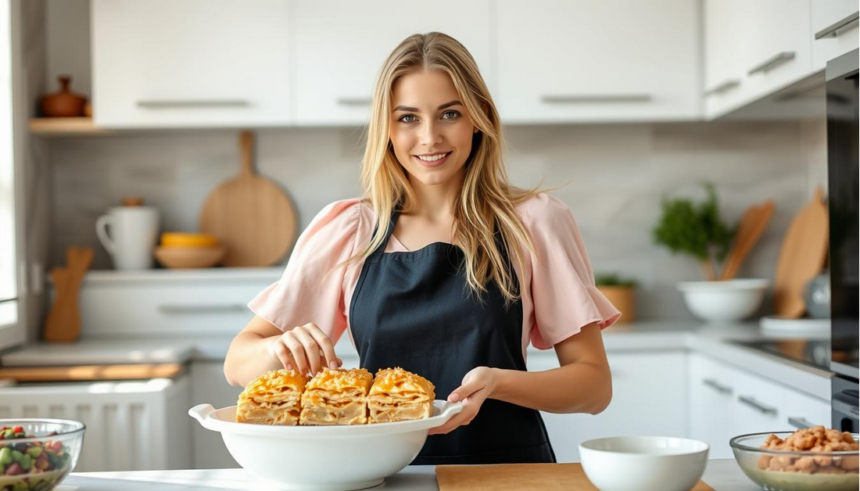Step-By-Step Homemade Baklava Recipe Guide
Indulge in the rich flavors of the Mediterranean and Middle Eastern cuisine with a traditional dessert that’s both easy to make and impressively delicious. Our comprehensive guide will walk you through creating a mouth-watering authentic baklava recipe in the comfort of your own kitchen.
- The Rich History and Cultural Significance of Baklava
- Origins of Baklava Across the Mediterranean and Middle East
- Why Baklava Remains a Beloved Dessert Worldwide
- Essential Ingredients for Authentic Homemade Baklava
- Selecting the Right Phyllo Dough
- Choosing Between Walnuts, Pistachios, and Other Nuts
- The Perfect Butter for Flaky Layers
- Honey and Sugar Syrup Components
- Spices and Flavorings That Enhance Baklava
- Tools and Equipment You’ll Need
- Baking Pans and Size Considerations
- Essential Utensils for Working with Phyllo
- Measuring Tools for Precision
- Preparing Your Workspace for Baklava Success
- Setting Up an Efficient Phyllo Dough Station
- Proper Handling and Storing of Delicate Phyllo Sheets
- Time-Saving Preparation Tips
- Step-By-Step Homemade Baklava Recipe Guide
- Preparing the Nut Filling Mixture
- Buttering and Layering the Bottom Phyllo Sheets
- Adding the Nut Mixture
- Completing the Top Phyllo Layers
- Creating the Perfect Diamond Cut Pattern
- Baking Your Baklava to Golden Perfection
- Creating and Adding the Signature Honey Syrup
- Traditional Syrup Recipes and Variations
- Proper Cooling and Pouring Techniques
- The Hot-Cold Rule: Why It Matters
- Achieving the Perfect Syrup Consistency and Absorption
- Regional Variations and Dietary Adaptations
- Greek, Turkish, and Lebanese Baklava Styles
- Gluten-Free Baklava Options
- Healthier Baklava Alternatives
- Nut-Free Variations for Allergies
- Troubleshooting Common Baklava Problems
- Fixing Soggy Baklava Issues
- Dealing with Dry or Overly Hard Texture
- Remedies for Uneven Baking
- Addressing Syrup Absorption Problems
- Conclusion: Serving, Storing, and Enjoying Your Homemade Baklava
- FAQ
- What is the best type of nuts to use for baklava?
- How do I prevent my baklava from becoming soggy?
- Can I make baklava without phyllo dough?
- How do I store baklava to maintain its freshness?
- Can I make baklava ahead of time?
- What is the hot-cold rule when making baklava syrup?
- Can I adapt baklava to be gluten-free?
- How do I achieve the perfect diamond cut pattern on my baklava?
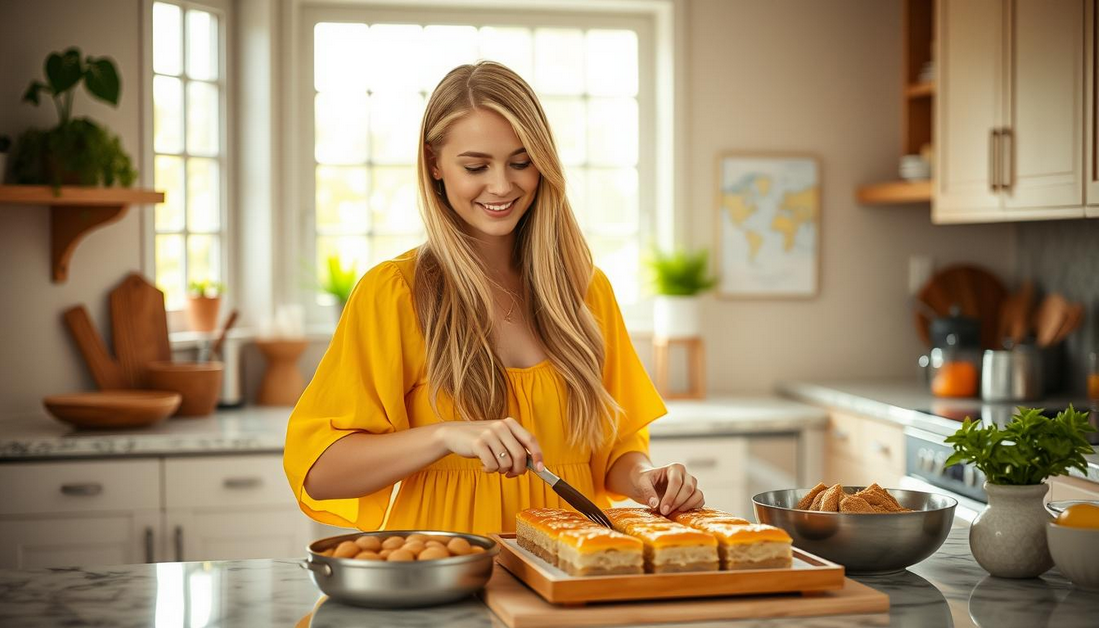
With layers of flaky phyllo dough, crunchy nuts, and sweet honey syrup, this classic dessert is sure to become a favorite among your friends and family. By following our step-by-step guide, you’ll be able to create a best baklava recipe that’s sure to impress.
Key Takeaways
- Learn how to make a delicious homemade baklava recipe with ease.
- Discover the secrets to creating a perfectly layered baklava.
- Get tips on how to achieve the perfect balance of crunchy nuts and sweet honey syrup.
- Impress your friends and family with a traditional Mediterranean dessert.
- Enjoy a sweet and satisfying treat that’s perfect for any occasion.
The Rich History and Cultural Significance of Baklava
The origins of baklava are shrouded in mystery, but its impact on Mediterranean and Middle Eastern cultures is undeniable. This dessert has been a staple in many cultures, symbolizing hospitality, love, and celebration.
Origins of Baklava Across the Mediterranean and Middle East
Baklava’s history is complex, with various cultures claiming its origin. The dessert is believed to have originated in ancient Assyria, where it was served as a sweet treat. Over time, it spread throughout the Mediterranean and Middle East, with each culture adapting it to their own tastes.

Why Baklava Remains a Beloved Dessert Worldwide
Baklava remains popular due to its rich flavors and cultural significance. It’s a dessert often served at special occasions and is a symbol of generosity and warmth.
| Culture | Baklava Tradition |
|---|---|
| Greek | Often served at weddings and holidays, symbolizing good luck and prosperity. |
| Turkish | A staple dessert during Ramadan, representing hospitality and generosity. |
| Lebanese | Typically served with coffee, embodying warmth and welcoming nature. |
Baklava’s enduring popularity is a testament to its rich history and the cultural significance it holds across different societies. Its presence in various forms and flavors continues to make it a beloved dessert worldwide.
Essential Ingredients for Authentic Homemade Baklava
Creating authentic homemade baklava starts with selecting the right ingredients, a crucial step that ensures the dessert’s signature taste and texture. The quality and type of ingredients used can significantly impact the final product, making it essential to understand what each component brings to the baklava.
Selecting the Right Phyllo Dough
The foundation of baklava is its phyllo dough, which should be crispy and flaky. When selecting phyllo dough, look for products that are labeled as “fresh” or “high-quality.” Frozen phyllo dough is a good option, but ensure it’s thawed properly before use. Some brands offer phyllo dough specifically designed for baklava recipes, which can simplify the process.
Choosing Between Walnuts, Pistachios, and Other Nuts
Nuts are a crucial component, providing texture and flavor. Walnuts and pistachios are traditional choices, with walnuts offering a richer, earthier flavor and pistachios providing a softer, more delicate taste. Other nuts like almonds can also be used, offering a different flavor profile. The choice of nut depends on personal preference and regional traditions.
| Nut Type | Flavor Profile | Texture |
|---|---|---|
| Walnuts | Rich, Earthy | Crunchy |
| Pistachios | Soft, Delicate | Crunchy |
| Almonds | Sweet, Nutty | Crispy |
The Perfect Butter for Flaky Layers
Butter is essential for brushing phyllo dough, as it adds flavor and helps achieve the signature flaky layers. High-quality, unsalted butter is recommended for the best results. The butter should be melted and brushed evenly onto the phyllo sheets to ensure uniform baking.
Honey and Sugar Syrup Components
The syrup, made from honey and sugar, is what gives baklava its characteristic sweetness and stickiness. The ratio of honey to sugar can vary based on personal preference, but a traditional syrup often includes a mix of both. Some recipes also incorporate lemon juice or rose water for added depth.
Spices and Flavorings That Enhance Baklava
Spices like cinnamon and cardamom are commonly used to add warmth and complexity to the nut mixture. These spices can be adjusted according to taste, and other flavorings like orange blossom water can also be incorporated to enhance the dessert’s aromatic qualities.
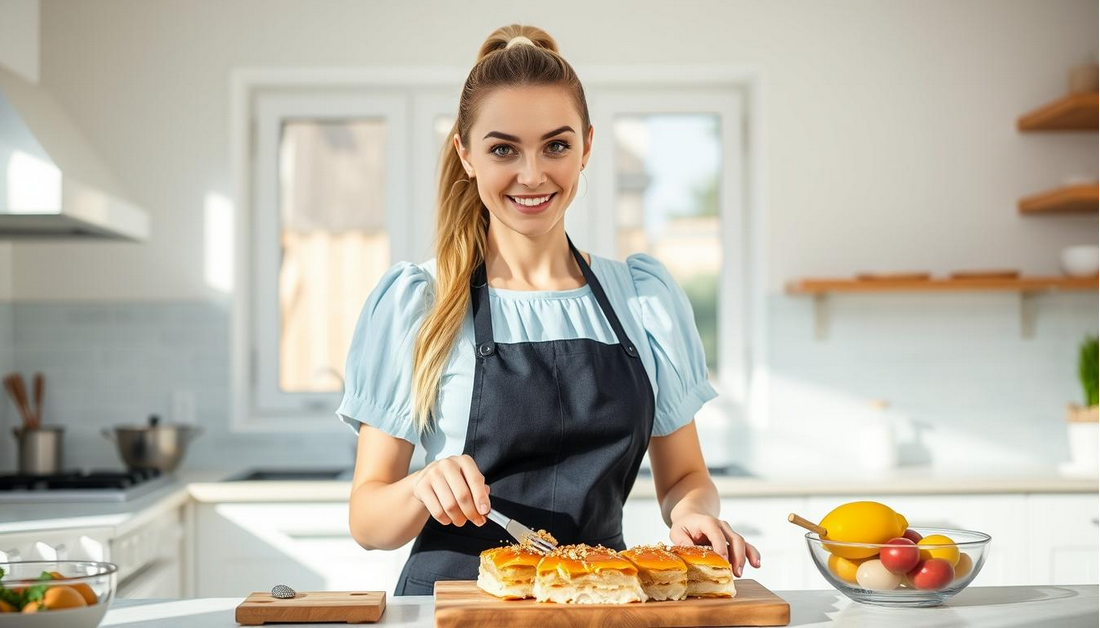
Tools and Equipment You’ll Need
Making baklava requires more than just ingredients; you’ll also need the right tools and equipment. Having the proper tools on hand will make the process smoother and more enjoyable.
Baking Pans and Size Considerations
Choosing the right baking pan is crucial for achieving the perfect baklava. A 9×13 inch pan is standard, but you can adjust the size based on your needs. Ensure the pan is deep enough to accommodate the multiple layers of phyllo dough and nuts. A non-stick pan or a well-greased pan can prevent the baklava from sticking.
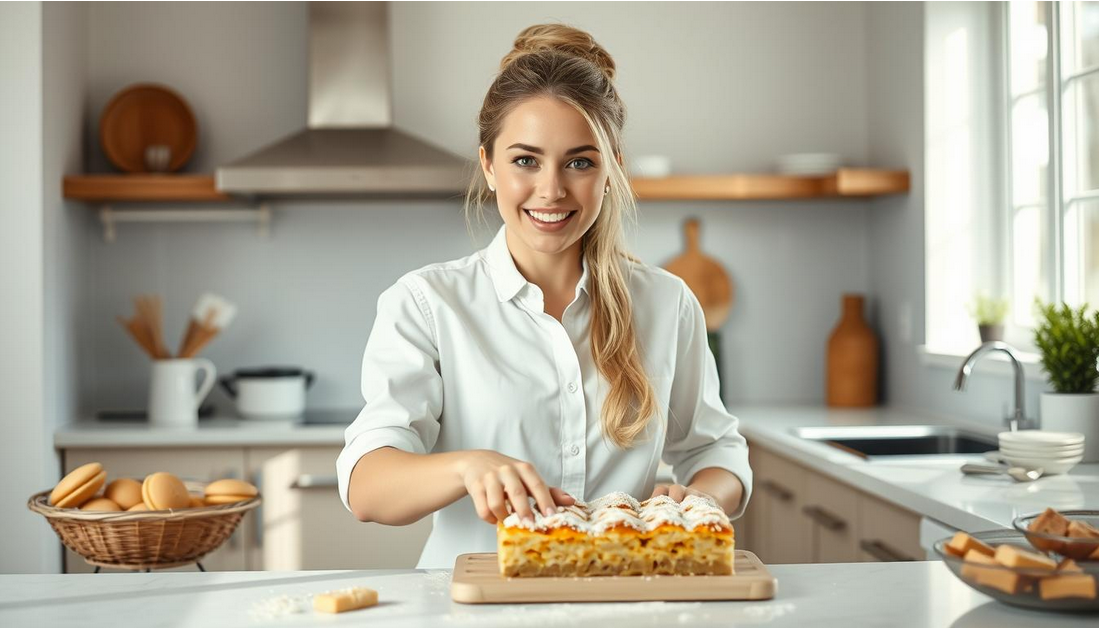
Essential Utensils for Working with Phyllo
Working with phyllo dough requires some specialized utensils. A sharp knife or pastry cutter is necessary for cutting the phyllo sheets. You’ll also need a brush for applying melted butter between the layers. Using the right utensils will help prevent the phyllo from tearing and ensure even layers.
Measuring Tools for Precision
Measuring tools are vital for achieving the perfect balance of flavors in your baklava. Use a digital scale or measuring cups to accurately measure ingredients like nuts, sugar, and spices. Precision in measuring will ensure your baklava turns out as expected.
Preparing Your Workspace for Baklava Success
A well-organized workspace is crucial for creating beautiful and delicious baklava. To achieve this, you’ll need to set up an efficient area for working with phyllo dough.
Setting Up an Efficient Phyllo Dough Station
Begin by clearing a large, flat surface for your phyllo dough station. Cover the area with parchment paper or a lightly floured surface to prevent the phyllo from sticking. Have all your ingredients and tools within reach to streamline the process.

Proper Handling and Storing of Delicate Phyllo Sheets
When handling phyllo sheets, it’s essential to be gentle to avoid tears. Keep the phyllo covered with plastic wrap or a damp cloth when not in use to prevent drying out. For storing phyllo dough, place it in an airtight container in the refrigerator for up to a week or freeze for longer storage.
Time-Saving Preparation Tips
To save time during the baklava-making process, prepare your ingredients in advance. Chop nuts, mix spices, and measure out honey and sugar syrup components before starting. These baklava preparation tips will help you work efficiently and enjoy the process.
Step-By-Step Homemade Baklava Recipe Guide
Homemade baklava is a treat that’s worth the effort, and this detailed recipe will walk you through each stage of the process. Making a homemade baklava recipe from scratch can seem daunting, but by breaking it down into manageable steps, you’ll be able to create a delicious dessert that’s sure to impress.
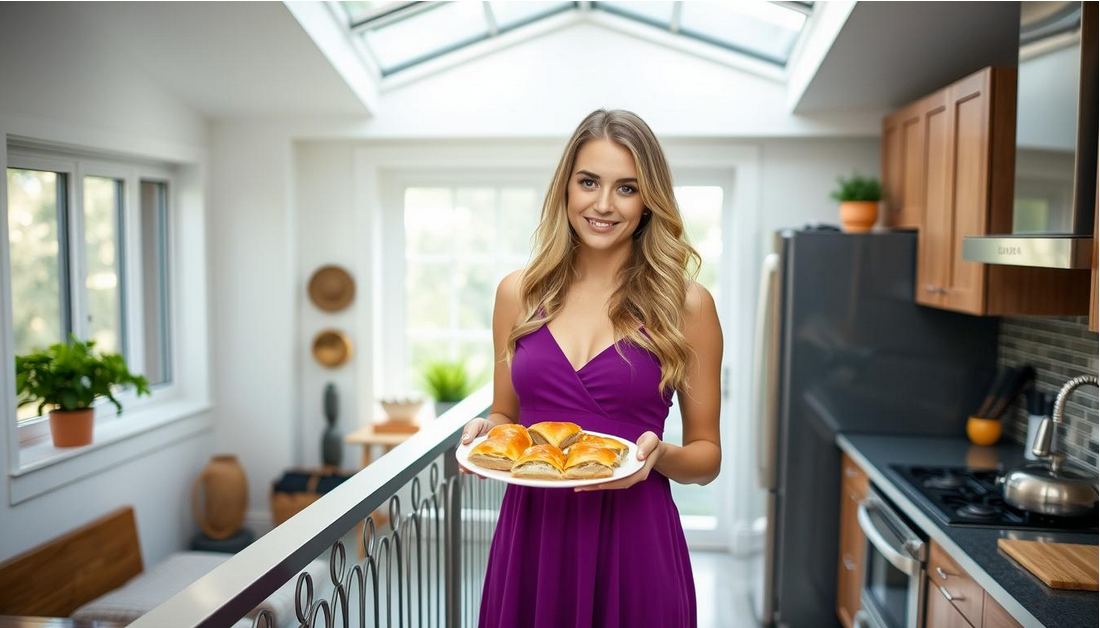
Preparing the Nut Filling Mixture
The nut filling mixture is a crucial component of baklava. To prepare it, you’ll need to select your preferred nuts – walnuts, pistachios, or a combination of both. Chop the nuts finely and mix them with a bit of sugar and a pinch of cinnamon. The sugar will help balance the flavors, while the cinnamon adds warmth to the nut mixture.
- Chop 1 cup of nuts (walnuts, pistachios, or a mix)
- Mix with 2 tablespoons of granulated sugar
- Add 1/4 teaspoon of ground cinnamon
Buttering and Layering the Bottom Phyllo Sheets
To create the flaky layers of baklava, you’ll need to butter and layer the phyllo sheets. Start by brushing the bottom sheet with melted butter, ensuring it’s fully coated. This step is crucial for achieving the perfect flaky texture.
- Brush the bottom phyllo sheet with melted butter
- Repeat the layering process 2-3 times
Adding the Nut Mixture
Once you’ve layered the bottom phyllo sheets, it’s time to add the nut mixture. Spread the mixture evenly across the top layer, leaving a small border around the edges. This ensures the nuts are distributed evenly and don’t spill over during baking.
Completing the Top Phyllo Layers
After adding the nut mixture, continue layering the phyllo sheets on top, brushing each sheet with melted butter. This process helps create the signature layered effect of baklava.
Creating the Perfect Diamond Cut Pattern
Before baking, use a sharp knife to create a diamond cut pattern on the top layer of baklava. This not only makes the dessert visually appealing but also helps the syrup penetrate evenly during baking.
By following these steps, you’ll be able to create a delicious homemade baklava that’s sure to impress. Remember, the key to a perfect baklava is in the layering and the quality of the ingredients used.
Baking Your Baklava to Golden Perfection
To ensure your baklava turns out crispy and golden, it’s crucial to follow the right baking guidelines. Baking baklava to perfection involves a combination of the right temperature, precise timing, and careful observation.
Temperature and Timing Guidelines
Preheat your oven to 350°F (175°C). The baking time typically ranges from 45 to 50 minutes, depending on your oven’s performance. It’s essential to check on your baklava halfway through the baking time to ensure even browning.
Visual Cues for Doneness
A perfectly baked baklava should have a golden brown color and a crispy texture. Keep an eye on the edges and the top layer; they should be evenly golden. Use the following table to gauge doneness:
| Visual Cue | Description |
|---|---|
| Golden Brown Color | The baklava should have an even, golden brown color. |
| Crispy Texture | The layers should be crispy and not soft or soggy. |
Common Baking Mistakes to Avoid
Common mistakes include overbaking, underbaking, and uneven layering. To avoid these, ensure your oven is at the correct temperature, and keep an eye on your baklava while it’s baking.
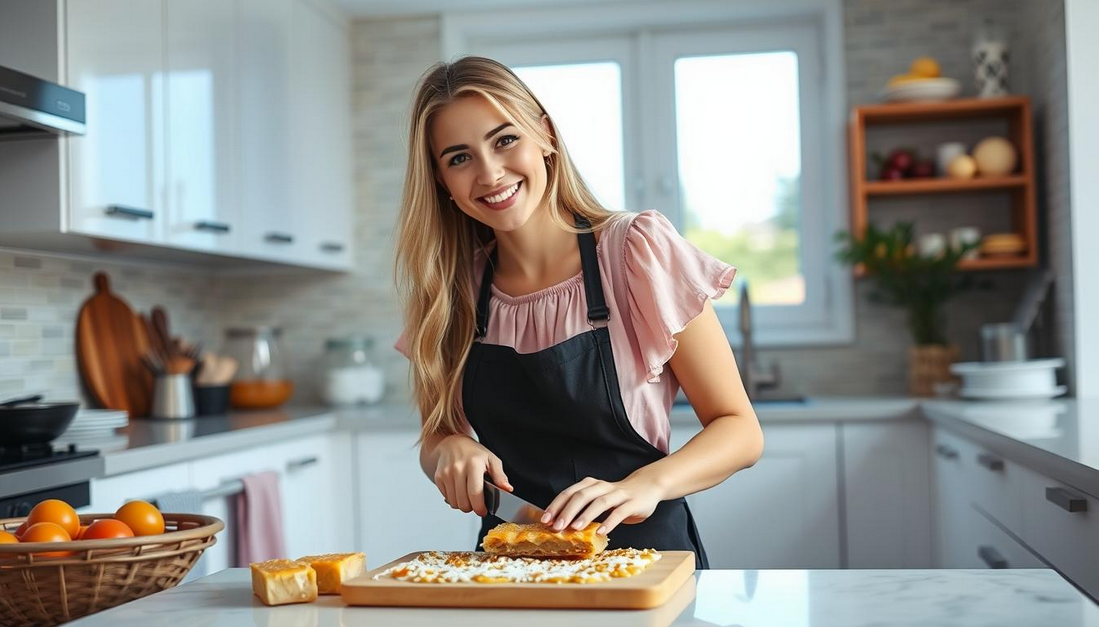
By following these guidelines and being mindful of the visual cues, you’ll be able to achieve a perfectly baked baklava that’s sure to impress.
Creating and Adding the Signature Honey Syrup
To elevate your baklava game, mastering the honey syrup is essential. The honey syrup for baklava is more than just a sweetener; it’s a crucial component that brings all the flavors together. A well-made syrup can make the difference between good baklava and great baklava.
Traditional Syrup Recipes and Variations
Traditional syrup recipes often include a combination of honey, sugar, and water, sometimes flavored with rose water or orange blossom water. Variations can include using different types of honey, such as clover or wildflower, or adding spices like cinnamon or cardamom. Some recipes also call for a touch of lemon juice to balance the sweetness.
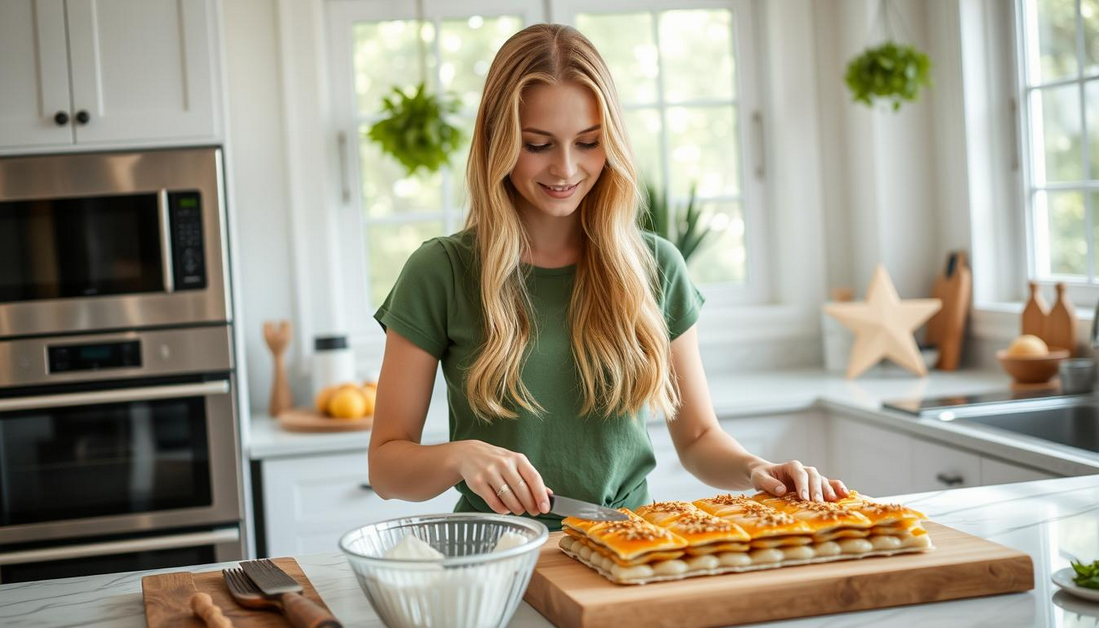
Proper Cooling and Pouring Techniques
Once your syrup is prepared, it’s crucial to follow proper cooling and pouring techniques. Allow the syrup to cool slightly before pouring it over the baked baklava. This helps prevent the phyllo from becoming soggy.
The Hot-Cold Rule: Why It Matters
The hot-cold rule is a fundamental principle in making baklava. It involves pouring the warm syrup over the hot baklava or vice versa. This technique ensures that the syrup is absorbed evenly throughout the layers. Pouring hot syrup over cold baklava or cold syrup over hot baklava can lead to uneven absorption and a less desirable texture.
Achieving the Perfect Syrup Consistency and Absorption
To achieve the perfect syrup consistency, cook it until it reaches 235°F to 240°F on a candy thermometer. This ensures it will set properly without becoming too thick. When pouring the syrup over the baklava, do so slowly and evenly to ensure all layers absorb the syrup uniformly.
By mastering the art of creating and adding the signature honey syrup, you’ll elevate your baklava to a new level of deliciousness. Experiment with different syrup recipes and techniques to find your perfect combination.
Regional Variations and Dietary Adaptations
Baklava’s adaptability makes it a beloved dessert worldwide, with diverse regional interpretations. This versatility allows baklava to be enjoyed by people with various dietary needs and preferences.
Greek, Turkish, and Lebanese Baklava Styles
Different regions have their unique take on baklava. For instance, Greek baklava often uses honey and walnuts, while Turkish baklava may incorporate pistachios and a lighter syrup. Lebanese baklava, on the other hand, might use a combination of nuts and a fragrant syrup flavored with rose water or orange blossom water. These regional variations showcase the dessert’s flexibility and the creativity of local bakers.

Gluten-Free Baklava Options
For those with gluten intolerance, baklava can be adapted by using gluten-free phyllo dough. This allows everyone to enjoy the layers of crispy phyllo and nuts. Some brands offer gluten-free phyllo, making it easier to create a gluten-free baklava recipe.
Healthier Baklava Alternatives
To make a healthier baklava, bakers can reduce the amount of sugar in the syrup or use natural sweeteners like honey or maple syrup. Another option is to use less butter or substitute it with a healthier fat. These adjustments can make baklava a slightly healthier dessert option without sacrificing flavor.
Nut-Free Variations for Allergies
For individuals with nut allergies, nut-free baklava can be made by substituting nuts with seeds like sunflower or pumpkin. This adaptation ensures that everyone can enjoy baklava, regardless of dietary restrictions.
By embracing these variations, baklava continues to be a dessert that brings people together, regardless of their dietary needs or cultural background.
Troubleshooting Common Baklava Problems
Troubleshooting baklava problems can be straightforward with the right guidance. Even with the best recipe, baklava can sometimes be tricky to make, but by understanding common issues and their solutions, you can achieve perfect results.
Fixing Soggy Baklava Issues
Soggy baklava is often caused by excessive syrup or improper cooling techniques. To avoid this, ensure that your syrup is not too thin and that you allow the baklava to cool completely before serving. Here are some tips:
- Reduce the amount of syrup used if you prefer a drier baklava.
- Ensure proper cooling and storage to prevent moisture buildup.
Dealing with Dry or Overly Hard Texture
Dry or hard baklava can result from overbaking or using too little syrup. To fix this, check your baking time and temperature, and consider adding a bit more syrup to the baklava after it’s baked.
- Monitor your baklava closely while it’s baking to prevent overcooking.
- Adjust your syrup recipe to achieve the right consistency.
Remedies for Uneven Baking
Uneven baking can be caused by an incorrect oven temperature or uneven phyllo layering. To remedy this, ensure your oven is at the right temperature and that your phyllo layers are evenly distributed.
- Use an oven thermometer to verify your oven’s temperature.
- Take your time when layering the phyllo to ensure even coverage.
Addressing Syrup Absorption Problems
Syrup absorption issues can arise if the baklava is not cut properly or if the syrup is too thick. To address this, make sure to cut your baklava into the correct diamond pattern and adjust the syrup’s consistency as needed.
- Cut the baklava before baking to help the syrup penetrate evenly.
- Adjust the syrup’s consistency by adding a bit more honey or water.
Conclusion: Serving, Storing, and Enjoying Your Homemade Baklava
Now that you’ve made your homemade baklava, it’s time to enjoy the fruits of your labor. Serving baklava is an art that requires a bit of finesse. To present your baklava beautifully, consider arranging the diamond-cut pieces on a decorative platter or individual plates. You can garnish with a sprinkle of powdered sugar or a few chopped nuts to add a touch of elegance.
When it comes to storing baklava, it’s essential to keep it fresh. Store your baklava in an airtight container at room temperature for up to two weeks. If you need to store it for a longer period, consider freezing it. Baklava storage tips include keeping it away from direct sunlight and moisture to preserve its crunchy texture and sweet flavor.
Enjoying homemade baklava is a delight that can be shared with family and friends. Serve it as a dessert or a sweet snack, paired with a cup of coffee or tea. The rich flavors and crunchy texture of your homemade baklava are sure to impress. With these tips, you’re ready to savor every bite of your delicious homemade baklava.
FAQ
What is the best type of nuts to use for baklava?
The most commonly used nuts for baklava are walnuts, pistachios, and almonds. Walnuts are a classic choice, while pistachios add a unique flavor and texture. You can also mix different types of nuts for a unique taste.
How do I prevent my baklava from becoming soggy?
To prevent soggy baklava, make sure to not over-soak the phyllo dough in butter, and bake it until it’s golden brown. Also, ensure that the honey syrup is not too wet or sticky, and that it’s poured over the baklava at the right temperature.
Can I make baklava without phyllo dough?
While traditional baklava is made with phyllo dough, you can experiment with alternative ingredients like puff pastry or even a nut-based crust. However, keep in mind that the texture and flavor will be different from traditional baklava.
How do I store baklava to maintain its freshness?
To keep baklava fresh, store it in an airtight container at room temperature for up to 5 days. You can also freeze it for up to 2 months. When serving, let it come to room temperature to allow the flavors to shine.
Can I make baklava ahead of time?
Yes, you can make baklava ahead of time. Assemble the baklava up to a day before baking, and store it in the refrigerator. You can also bake it ahead of time and store it in an airtight container.
What is the hot-cold rule when making baklava syrup?
The hot-cold rule refers to pouring the hot honey syrup over the cooled baklava, or vice versa. This helps the syrup absorb evenly and prevents the baklava from becoming soggy.
Can I adapt baklava to be gluten-free?
Yes, you can make gluten-free baklava by using gluten-free phyllo dough or substituting it with a gluten-free alternative. Be sure to check the ingredients of your nuts and spices to ensure they are also gluten-free.
How do I achieve the perfect diamond cut pattern on my baklava?
To achieve a perfect diamond cut pattern, use a sharp knife and cut the baklava in a gentle sawing motion, applying gentle pressure. Make sure to cut through the layers evenly, and use a ruler or other straightedge as a guide.

